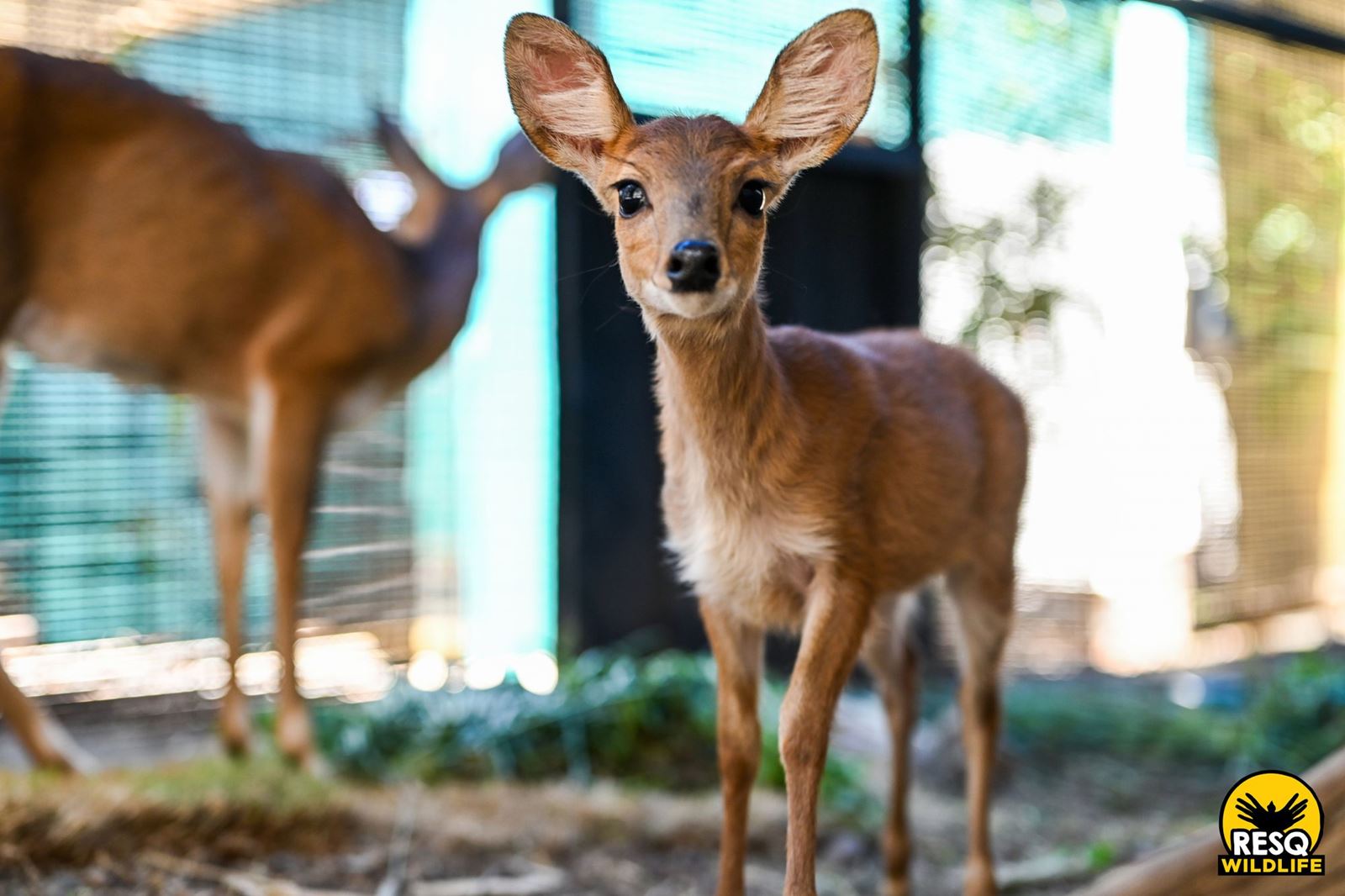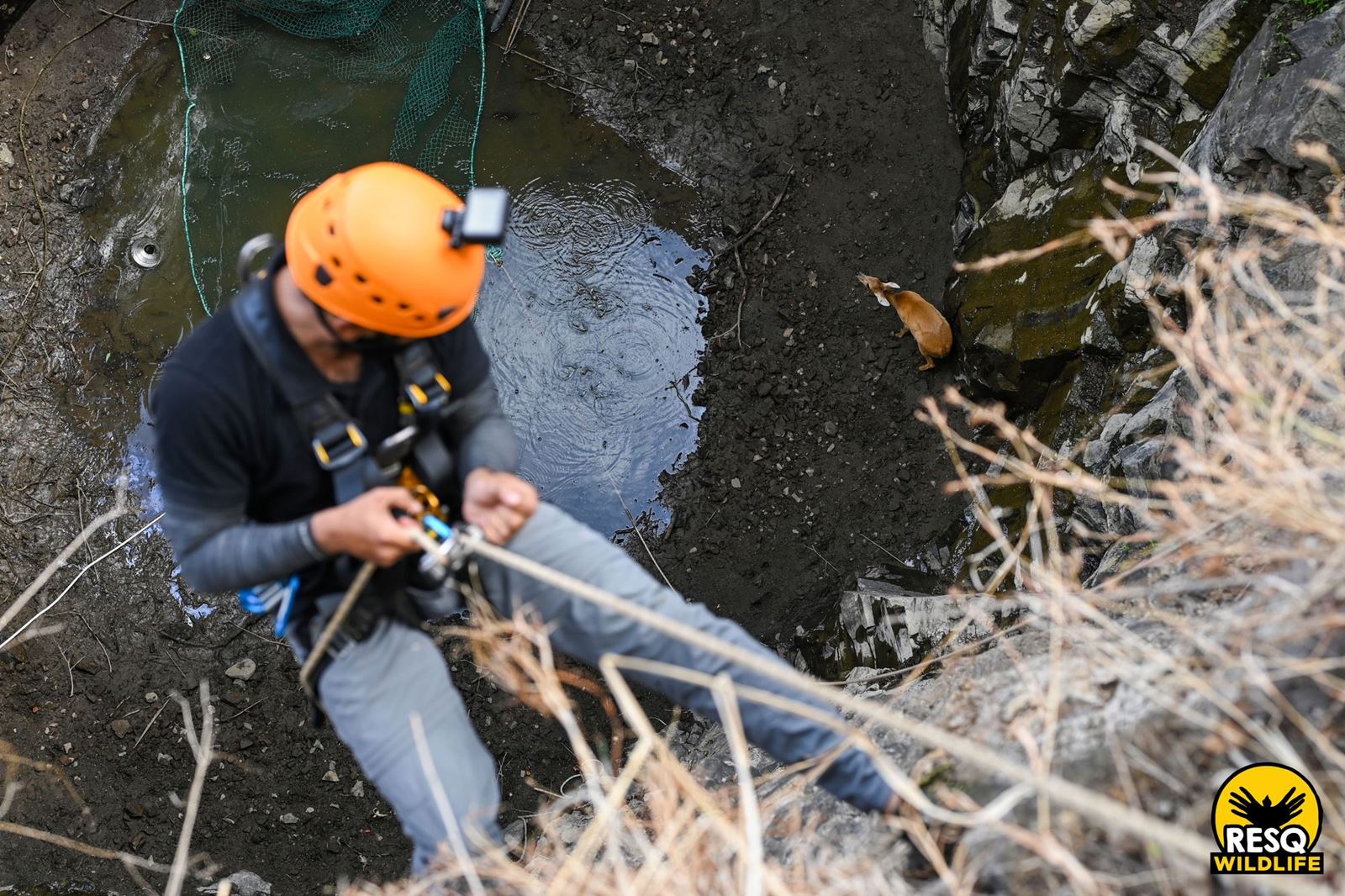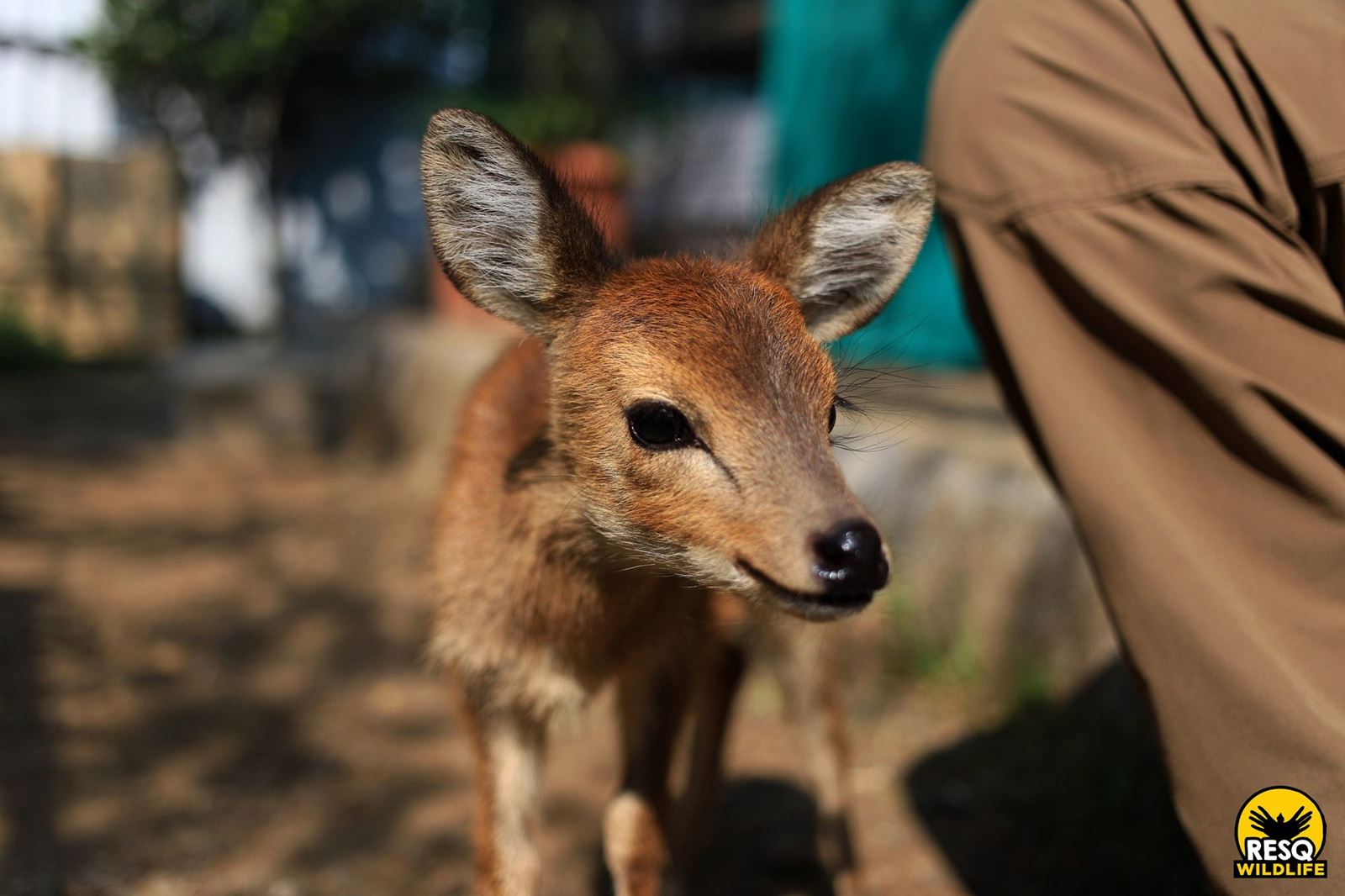It was a crisp morning with a slight nip in the air. Every person at the RESQ Wildlife TTC was relying heavily on the hot beverage of their choice to get on with the morning while the veterinary and rehabilitation team was already preparing for the RESQ ambulance to roll in. The RESQ Squad was out to rescue a Four Horned Antelope that was attacked by free-ranging dogs. Within minutes of the ambulance arriving, the race against time to save this Antelope was on. A young female four-horned antelope colloquially known as Chousingha, was rushed into the treatment room. While our team covered its eyes per protocol to minimize its stress levels, and immediately administered medication to relieve its shock and pain, dog attacks - depending on how grave, are life-threatening to ungulates. This was not the first Chousingha that was brought in post a dog-attack, but this case was particularly dire.
Generally hard to sight in its natural habitat because of its introverted nature and camouflaging techniques; if you’re lucky to spot it, it will always be a case of ‘blink-and-you-miss-it’. This being said they have been unable to escape the free-ranging dogs and the incidents of them becoming the victims road accidents, has greatly increased with time.
About Chousingha (four-horned antelope)
As the name suggests, Chousingha can be identified by the four horns as against other bovids which have two horns. They are the smallest antelopes found in Asia. When walking or running, their stride is jerky but tend to flee like most other antelopes, by bouncing off in a series of quick, high jumps. Despite being an animal of prey, they seldom make alarm sounds to avoid drawing the attention of the predators. On the contrary, in a state of fear, they freeze, and stare with ears perked, tail twitching, and limbs taut before leaping or dashing behind deep cover and lying low on the ground to avoid discovery.
Chousinghas are usually diurnal and solitary by nature, however, can be spotted in loose groups of three to four. They are mainly sighted away from human settlements throughout the deciduous forests. They have a yellowish-brown to reddish coat and are slender, with small legs and a short tail. Extremely endearing - teary, doleful expressions on their faces is actually created by a small black line running down from the edge of each eye to the nose. They usually feed on grass, herbs, shrubs, foliage, flowers, and fruits, and hence feel no need to crossover into any habitats close to human settlements. However, with rapid and rampant urbanisation, human presence is increasingly disturbing this species and its habitat, instigating them to fall prey to various conflict situations.

Chousinghas are interesting animals. The adults use a colourless fluid from their preorbital glands to label or mark the vegetation in their territories, which quickly condenses to form a white film. When they defecate, they tend to do it on previous piles of pellets designating them as their latrines!
Chousinghas at RESQ
Chousinghas have come to RESQ as victims of road accidents, dog bites, falling in wells, or as orphans.
Recently we had a case of a Chousingha that had fallen down a 70ft well and to our surprise had not injured a single bone. That could be attributed to the fact that the well had water which might have controlled her fall. Our Technical rescue team rescued and released this antelope withing 90 minutes of arriving at the rescue site.

This swift action and positive outcome is not what we usually see in other cases like dog-attacks or road accidents. The trauma and stress caused to the animal because of these reasons is immense – depending upon the intensity of the injuries.
In another case a Chousingha fawn who came to us after being found as an orphan went on to bonding with another sub-adult female who was already under rehabilitation. Their enclosures have been carefully enriched to mimic their natural habitat. A DIY ungulate feeder was initially placed in the orphan’s enclosure at the right height for her to feed on her own, as if she was feeding on her lactating mother. These small hacks expand our rehabilitation horizons and better prepare us to tend to various kinds of situations while keeping in mind the ultimate rehabilitation goal of minimal handling and mimicking natural habitats while the animals stay with us for the time of recovery.

As fulfilling as we feel, about being instrumental in treating and rehabilitating these beautiful animals so that they can be released into the habitats to live a life of freedom, we often worry about the repeated threat they face due to expansion of human settlements and the ever-increasing population of free-ranging dogs brings along. To support the care of these animals, and our ungulate unit at the RESQ Wildlife TTC, click on the link in the bio.